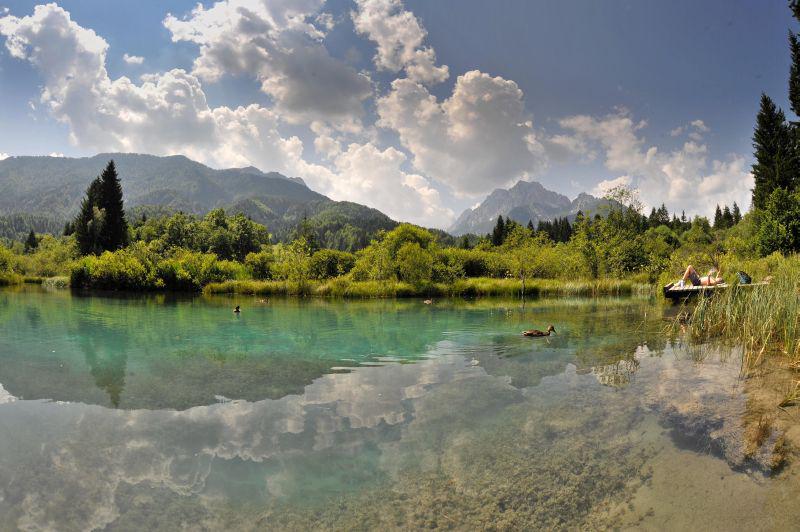
Not far from the area where Slovenia, Austria, and Italy come together, just a short distance from the Alpine resort of Kranjska Gora, lies a system of wetlands and ponds that has remained unchanged for centuries. The area has been a nature reserve for more than two decades, but locals are becoming worried that a natural gas pipeline could hurt its fragile ecosystem.
The name “Zelenci” derives from the Slovenian word for “green,” and it is quickly apparent how the area got its name. Hidden among the abundant vegetation are several emeralds ponds, which are filled by spring water emerging from the sand in small jets. The water flows out of the ponds in the form of the Sava River, which ultimately joins the Danube in Serbia and empties into Black Sea.
From boardwalks and an observation tower, visitors can observe some of the rarest plants in Slovenia, including cotton grass and buckbean. The animal life is equally diverse, and features such endangered species as the whiskered bat and several red-listed snakes.
The area that now comprises Zelenci was once a glacial lake, but the dam that had enclosed it eventually eroded and the water levels began to recede until about two meters of water remained – the average depth of the present-day ponds.
Through the ages, local residents used the long grasses from Zelenci as horse fodder, but it was a famous British scientist who brought the area to the world’s attention. Humphry Davy studied the water system of Zelenci and fell in love with its scenic beauty. He famously remarked that “there is no more beautiful spot” in Europe than the Upper Sava Valley. In 1992, Zelenci was finally declared a nature reserve.
In recent months, however, local residents have become increasingly concerned about the Slovenian government’s plans to run the Russian-backed Southern Stream natural gas pipeline through the narrow Upper Sava Valley. The pipeline would run just meters away from the natural reserve, and locals have begun to demand clear answers before construction is allowed to proceed. They have been joined by environmentalists who are determined to protect one of the most unique – and fragile – natural jewels of the Slovenian Alps from the possibly irreversible effects of human development.


































































